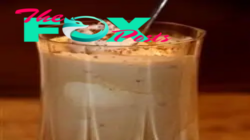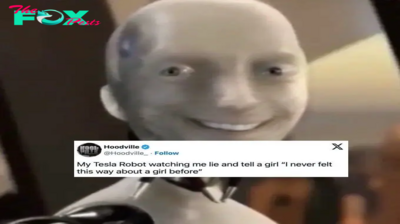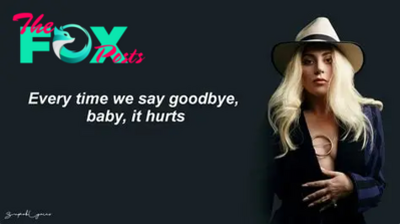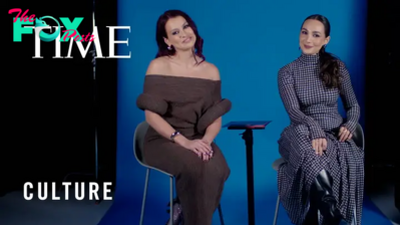Entertainment
Making Sense of I Saw The TV Glow’s Tragic and Terrifying Ending
If you are looking for a movie that will explain everything to you, I Saw the TV Glow, now in theaters, is not that movie. The film, from writer-director Jane Schoenbrun, is effective because it keeps its characters—and the audience—from being certain where fantasy ends and reality begins.
The film is a follow-up to their 2021 psychological horror movie We're All Going to the World's Fair. That movie used vlogging culture and online challenges to explore loneliness, identity, and the power of screens. For I Saw The TV Glow, Schoenbrun, who is trans and non-binary, turns back the clock to the period of their own adolescence and two retro mediums: cable television and VHS recordings. In a story about two teens with questions about their identities and an obsession with a fake TV show, The Pink Opaque, Shchoenbrun explores how we see ourselves in pop culture and how it can be a gateway to understanding our own identities. It’s a film about projection, and it finds beauty but also loss and terror in the space between what we see and what we know to be true—and what we might, on an unspoken, deeper level, know to actually be true even if we can’t fully recognize it.
What Is I Saw the TV Glow About?
It’s the ‘90s, and Owen (played initially by Ian Foreman and by Justice Smith in subsequent time periods) is an awkward seventh-grader with a kind mother (Danielle Deadwyler) and a strict, cold father (Limp Bizkit’s Fred Durst). He meets Maddy (Brigette Lundy-Paine), a slightly older girl in ninth grade, and they form a strange sort of bond over Maddy’s favorite show, The Pink Opaque.
The Pink Opaque is the nexus around which I Saw the TV Glow—and Owen and Maddy’s lives—revolves. It’s in the style of a late-’90s young adult series, complete with a 4:3 aspect ratio and the fuzzy, lowered video quality that pre-high-definition digital had. The Pink Opaque’s iNFLuences are numerous and obvious. Two teenage girls met once at summer camp, forging a psychic bond that they use to defeat the monstrous minions of Mr. Melancholy, including a goopy ogre made of ice cream, from opposite sides of the county. Think Buffy the Vampire Slayer with the tweenage horror of Are You Afraid of the Dark, Mighty Morphin’ Power Rangers’ costumed goons, and a touch of The Adventures of Pete & Pete’s surreality. There’s another show in there, too. Twin Peaks was not a Nickelodeon-type YA series, but the acclaimed David Lynch series played with the nature of reality in a way that’s all over I Saw the TV Glow, as The Pink Opaque causes Owen to unravel.
Though she’s not especially friendly to Owen, Maddy recognizes something in him and keeps recording episodes of The Pink Opaque on VHS for Owen to watch because new episodes air after his bedtime. The show becomes a neon-pink escape for both of them. Her stepfather is abusive, and her one real friend ditches her to befriend the popular kids once Maddy comes out as liking girls. After Owen’s mother dies of cancer, he’s left with his dad, whose only spoken line in the whole movie is “Isn’t that a show for girls?” when Owen asks permission to stay up to watch The Pink Opaque. Both Owen and Maddy are searching for something in their lives, perhaps Owen especially, as he can’t quite verbalize what he’s missing. Their mutual object of fascination, The Pink Opaque, helps fill the void… until it’s canceled.
Even worse, Maddy disappears without a trace following the cancellation. Owen continues living his somewhat aimless life, getting a job at a Chuck E. Cheese-esque arcade. Then, Maddy unexpectedly returns with a revelation about The Pink Opaque that will change everything for Owen—if he believes it. Maddy claims that she’s been inside the world of The Pink Opaque. She and Owen are actually the show’s protagonists, Isabel (Helena Howard) and Tara (Lindsey Jordan), and the evil Mr. Melancholy defeated them and trapped them in this false reality. She asks Owen to come back with her in a process that involves being buried alive. According to the plan, Owen needs to "become" Isabel—here's some sort of identity transformation or transition in discussion, though the film doesn’t explicitly use these terms—once more (or at last, depending on your read of the movie's varying levels of text and subtext). At the very last minute, Owen backs out, incapable of taking the leap Maddy's asking. After all, it’s just a TV show… right?
How Does I Saw The TV Glow End?
The film ends many years later. After that fateful night, Owen never saw Maddy again, and he’s still working at the arcade. He looks old beyond his years and seems as though he’s dying inside—spiritually and physically. When he decides to rewatch The Pink Opaque he’s shocked to discover it’s not the show he remembered and identified so much with. Now that it’s easily available on streaming and he’s no longer a kid, it’s cheesy and cheap, a far cry from the complex, scary drama he and Maddy once saw themselves in. Was it always like this and it’s just his and Maddy’s perceptions that were different? Was Maddy telling the truth? I Saw the TV Glow doesn’t offer a firm answer, nor does it spell out its jaw-dropping finale.
While working a child’s birthday party at the arcade with his coworkers (including Conner O'Malley, a comedian known for his manic style who brings just a touch of his unhinged energy to the film), Owen suddenly freaks out in the middle of singing “Happy Birthday.” He starts screaming, over and over again, for help, only to be eerily ignored by everyone in the room. When he goes to the bathroom to recover, he has a further breakdown—or maybe it’s a breakthrough. Standing in front of the mirror, he cuts into his chest and pulls himself apart to reveal a blinding, beautiful light as the music swells. It’s strange and scary, but ultimately triumphant, as though Owen has finally been able to reach whatever he saw in The Pink Opaque.
Then we cut to Owen meekly apologizing to the various guests for his freakout, the previous scene seemingly a fantasy, and the film ends.
What Does I Saw the TV Glow’s Ending Mean?
I Saw the TV Glow does not offer a definitive answer on whether or not The Pink Opaque is a real world unto itself or if it’s just a TV show, and that uncertainty is essential to the film’s horror. In interviews since the film’s Sundance premiere, Schoenrun has stated that it is a trans narrative. Owen’s story can be considered a metaphor for “eggs,” a term for trans people who don’t yet realize that they are trans. (Tons more to read about “eggs” from trans people, like here and here.) His identification with The Pink Opaque is an outlet for feelings he hasn’t been able—or perhaps is unwilling—to express. Seeing yourself, or a version of the “you” you could be, in a piece of pop culture is a shared universal experience. It’s why representation matters, because seeing specifically what’s inside of you depicted in a piece of art can be an essential first step in understanding who you are and who you could be. Especially in the ‘90s, when explicit gay, lesbian, and especially trans narratives were rare in mainstream texts, The Pink Opaque is incredibly important for Owen and Maddy. Their obsession with it might not be Healthy, but it’s necessary.
Maddy could have been telling the truth about The Pink Opaque, but for Owen, it almost doesn’t matter. There was something about the show that spoke to some essential, if complicated, part of him. When he balks at Maddy’s offer to take him to the world of The Pink Opaque so he can access Isabel once again, the clearest read is the rejection of the possibility of accessing his true self. It’s understandable. Whether literal or metaphoric, there’s a Rubicon that Owen has to cross. That he can’t know whether it’s the right thing to do or not until after he goes through with it is scary.
It’s why the ending of I Saw the TV Glow is such a gut punch. Something about seeing children celebrating at a birthday party with their whole lives ahead of them while so much of his own life has passed him by triggers Owen. They’re a manifestation of all the years he’s lost living an untruth. These are happy, fresh-faced kids inside an arcade whose ‘90s-core decorations feel like something out of The Pink Opaque, celebrating their futures in a setting that reminds Owen of the path he didn’t take. So when he opens himself in the bathroom to reveal the light inside him, it feels cathartic. He’s not dead inside and there’s still a chance for his true self to come out. There’s terror in what’s happening, of course—the self-harming way he pulls his chest apart is body horror—but ultimately the act is a type of vindication; of The Pink Opaque, of Maddy, and of who Owen could be.
But, rather than end I Saw the TV Glow on this powerful note of possibility, the film instead ends with Owen apologizing for who he is. The Pink Opaque remains a fantasy. Neither Owen nor the audience gets confirmation, leaving us with a terrifying sense of uncertainty and tragedy. Owen never got a chance to fully see himself inside the TV glow. The what-ifs are more terrifying than any ice cream monster.
-

 Entertainment59m ago
Entertainment59m agoAmerica On CoffeeWe’re simply inviting you to take a timeout into the rhythmic ambiance of our breakfast, brunch and/or espresso picks. We’re completely satisfied everytime you cease by.Creole Espresso Recipes
-

 Entertainment1h ago
Entertainment1h agoThe Best Internet Memes About Elon Musk’s Tesla Robot
-

 Entertainment6h ago
Entertainment6h agoAmerica On CoffeeWe’re simply inviting you to take a timeout into the rhythmic ambiance of our breakfast, brunch and/or espresso picks. We’re pleased everytime you cease by.“BLONDIE – RAPTURE”
-

 Entertainment6h ago
Entertainment6h agoGladiator 3 Already in Works, Reveals Director
-

 Entertainment11h ago
Entertainment11h agoAmerica On CoffeeWe’re simply inviting you to take a timeout into the rhythmic ambiance of our breakfast, brunch and/or espresso picks. We’re comfortable everytime you cease by.Take pleasure in And, Chill out …
-

 Entertainment11h ago
Entertainment11h agoHow ‘Interior Chinatown’ Satirises Asians in Hollywood with Witty Social Commentary
-

 Entertainment16h ago
Entertainment16h agoPHOTO GALLERY: The Seaside Boys – OLG Stage at Fallsview On line casino – Niagara Falls, Ontario – November 16, 2024
-

 Entertainment22h ago
Entertainment22h agoAmerica On CoffeeWe’re simply inviting you to take a timeout into the rhythmic ambiance of our breakfast, brunch and/or espresso picks. We’re completely happy everytime you cease by.“All the time Keep in mind Us This Method” Woman Gaga

















